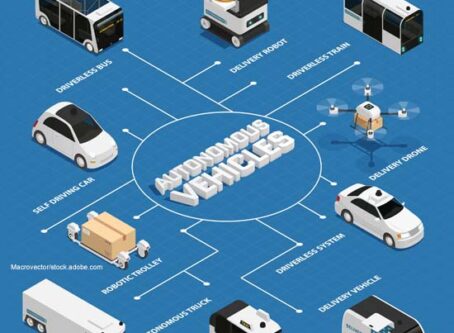GAO report: Long-haul truckers most affected by automated trucks
Although stakeholders cannot agree on many aspects of the future of automated trucks, there was a consensus on at least two points: Fully self-driving trucks that completely eliminate drivers are unlikely in the foreseeable future, but long-haul truckers will take the biggest hit in the workforce.
That’s according to a recently published report by the Government Accountability Office titled “Automated Trucking: Federal Agencies Should Take Additional Steps to Prepare for Potential Workforce Effects.” Input from several stakeholders, including the Owner-Operator Independent Drivers Association, Women in Trucking and the American Trucking Associations, was compiled to determine what automated trucks will mean to trucking jobs in the future.
Long story short: Long-haul truckers are likely to face the most significant impacts.
Hundreds of thousands of jobs at risk
The report studied two scenarios regarding automated trucks. One scenario includes fully self-driving trucks for part of the route, mostly exit-to-exit highway miles, with a human driver taking over for the local/urban routes. Another scenario requires a human in the vehicle at all times, regardless of the truck’s capabilities.
Regardless of the scenario, hundreds of thousands of truck driving jobs are at risk.
Studies that were reviewed estimate a job-loss range from less than 300,000 to more than 900,000 due to automation over a period of 10 to 20 years. To put that in context, there were nearly 2 million heavy and tractor-trailer truck driver jobs in 2017, according to the Bureau of Labor Statistics. This includes many kinds of drivers, including long-haul and local-haul, along with cement or garbage truck drivers.
Fully self-driving highway miles
Worst-case scenario for long-haul drivers is the one where self-driving trucks take over the entire highway trip. This scenario will likely reduce the number of long-haul drivers needed. Consequently, wages also will decrease due to lower demand for drivers.
This is good news for local-haul jobs, which could increase and offset losses from long-haul jobs. According to studies cited in the report, automated trucking would drive long-haul trucking costs down, leading more companies to use trucking to ship goods. As a result, demand for trucking could increase, leading to an increased demand for local-haul truck drivers on either end of the long-haul routes.
Wages for local-haul drivers could go up or down. On one hand, transitioning long-haul drivers could increase competition for those jobs, thereby lowering wages. On the other hand, wages for local-haul drivers could increase due to increased overall demand for trucking.
Many truckers today have expressed disdain for automated trucks. This was not lost on the authors of the report, who suggested these drivers will likely leave before automation takes over.
“Several stakeholders we spoke with agreed that any decrease in long-haul jobs would likely not affect many current drivers because most will have voluntarily left driving for a different job or retired by the time self-driving trucks are widely deployed,” the report states.
Carriers may also have an easier time retaining drivers. One factor in the high turnover rate is the lack of time at home. Eliminating highway driving will leave drivers local, allowing them to come home every night.
Driver required at all times
In the scenario where a driver is present at all times for complex driving and other nondriving tasks, the future is less bleak. Although duties will be different, the number of drivers would not change significantly.
Regarding wages and retention, predictions are less confident in this scenario. There was no consensus on how this situation may affect wages or even driver retention.
It’s possible that wages can increase if increased skills are needed to operate a truck with more sophisticated software. But with fewer driving tasks, wages can remain stagnant or even go down.
Retention can also be a problem in this scenario. Although driving will be mostly done by the vehicle itself, the need for a human presence will keep drivers away from home no different than today. If wages decrease while time away from home remains the same, there will likely be even less appeal to become a driver.
Other effects of automation
Unemployment in the trucking sector due to automation can be more severe in certain geographical locations. According to the report, tech developers are focusing testing in the Southwest because the weather is nice and the highways are long. Because of these optimal conditions, it is possible that adoption of automated trucks will occur in the Southwest first, meaning future job losses also will occur there before most places in the U.S.
Trucking jobs are also more regionally concentrated. This can pose a serious problem if many truckers in a concentrated region lose their job.
“More workers with similar skills in the same labor markets will be out of work at the same time, and thus the whole local economy will be more likely to suffer,” the report notes.
Most stakeholders said automated trucking could create jobs. Unfortunately, these jobs may not transition well for long-haul drivers, which include technicians, mechanics and engineers. Furthermore, those new jobs may not be in the same geographical area where driving jobs were lost.
Notably absent from the report is a scenario where fully self-driving trucks complete the entire trip, eliminating the need for a human driver. According to the GAO report, the majority of stakeholders found that scenario “either unlikely or at least several decades into the future.” Not a single developer who gave input planned to develop such technology. As a result, the report does not discuss the workforce effects of that scenario.









